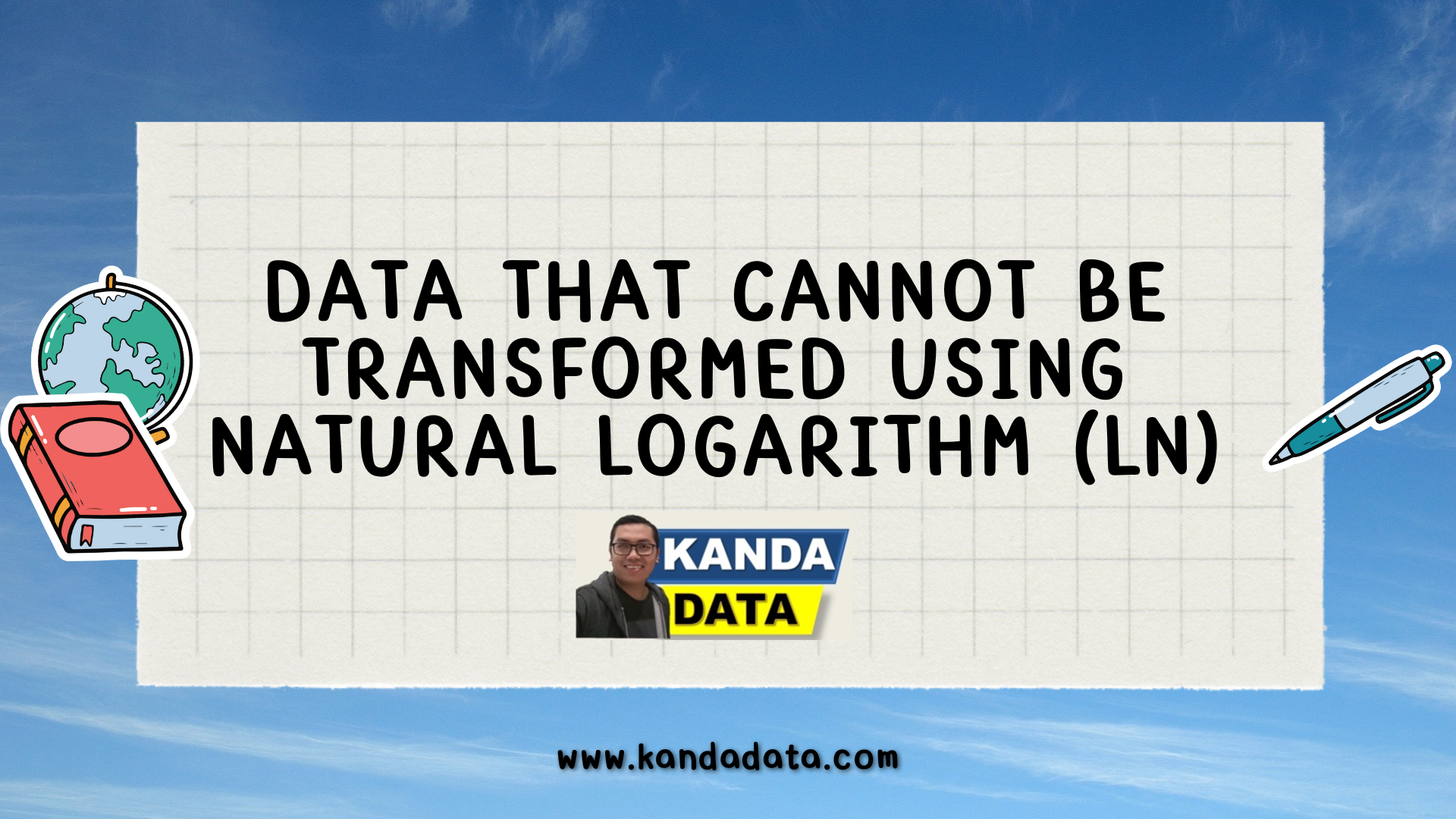Blog
Data That Cannot Be Transformed Using Natural Logarithm (Ln)
In quantitative data analysis, data transformation is not a new concept. It is a process of converting the original form of data into another form to improve the data and meet the assumptions required for quantitative data analysis.
In certain quantitative analyses, data transformation is not just optional but mandatory. For instance, when opting for Cobb Douglas regression analysis, transforming exponential data into a linear form requires using logarithmic transformation. Once linear, you can analyze it using multiple linear regression analysis as usual.
Form of Natural Logarithm Transformation
There are various data transformation forms to choose from, including square root, logarithm, natural logarithm, square, cubic, inverse, and other data transformation forms.
In this instance, I am writing about natural logarithm transformation, specifically focusing on data that cannot be transformed using natural logarithm.
Natural logarithm, symbolized as ln, is a logarithm with a base of e, where e is Euler’s number, a mathematical constant approximately equal to 2.71828. The natural logarithm of a number is the exponent that must be raised to the base e to obtain that number. For example, ln(e) = 1 because e^1 = e.
Apart from the natural logarithm, it’s essential to understand the difference between it and the base 10 logarithm. The main distinction lies in their logarithmic bases. Natural logarithm has a base of e, while the base 10 logarithm has a base of 10.
For example, if ln(x) is the natural logarithm of x, then log10(x) is the base 10 logarithm of x. Note that this difference only lies in the logarithmic base, and they can be converted using the change of base logarithm formula.
Advantages of Natural Logarithm Data Transformation
As mentioned earlier, natural logarithm data transformation can be done for specific purposes. Typically, this transformation is carried out to improve data in quantitative analysis.
Let’s explore the benefits of transforming data using natural logarithms. Through this transformation, we can stabilize data variance. Certain assumptions in quantitative data analysis, such as linear regression analysis, require constant residual variance. This data transformation is one way to stabilize the variance of the analyzed data.
Another benefit of this data transformation is its ability to improve data distribution. In some quantitative data analyses, the assumption is made that the data is normally distributed. This transformation can bring the data closer to normality.
Moreover, in linear regression analysis using the least squares method, there are several required assumptions, such as tests for heteroskedasticity, normality, multicollinearity, and linearity. The natural logarithm data transformation can assist in meeting these assumptions for linear regression tests. It can also help reduce skewness.
Data That Cannot Be Transformed Using Natural Logarithm
If your research data includes zero values, natural logarithm transformation cannot be applied to alter your data. The transformation of zero values using natural logarithm is undefined.
Additionally, if your research data includes many negative values, it is advisable to choose a different transformation form. Negative values are also undefined when transformed using natural logarithm. Performing the transformation on such data using data processing applications will yield inconclusive results.
Furthermore, natural logarithm transformation is not recommended for categorical or nominal scale data. Transforming these types of data using natural logarithm does not yield meaningful interpretations. Categorical or nominal scale data falls under non-parametric data.
This concludes the article I could write on this occasion. I hope it is beneficial and provides additional insights for those in need. Thank you for your attention; stay tuned for the next article update from Kanda Data next week.
